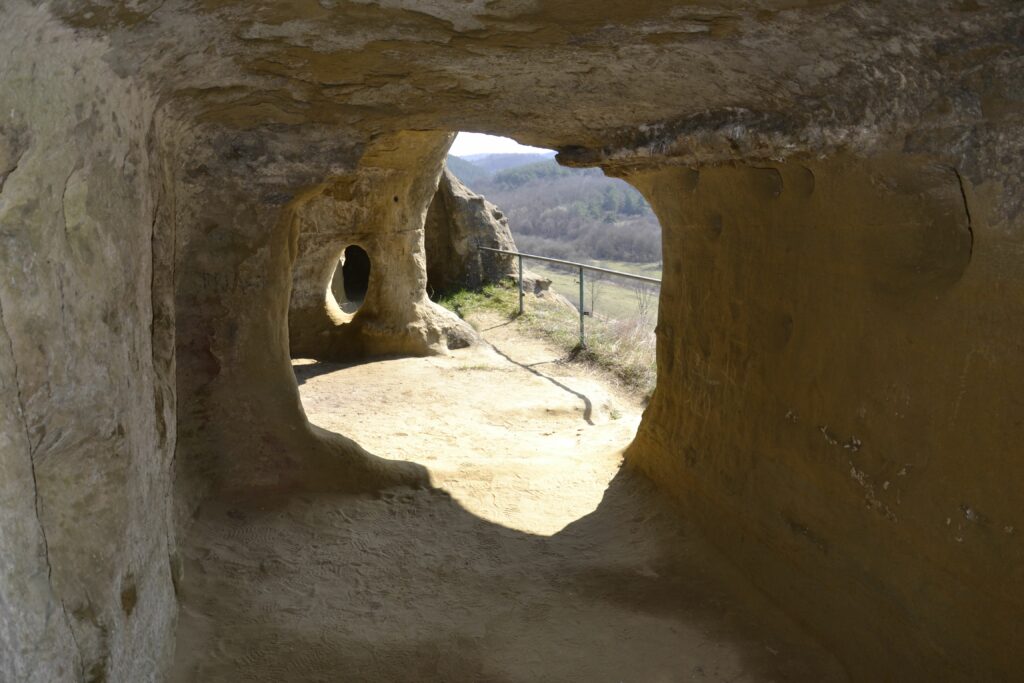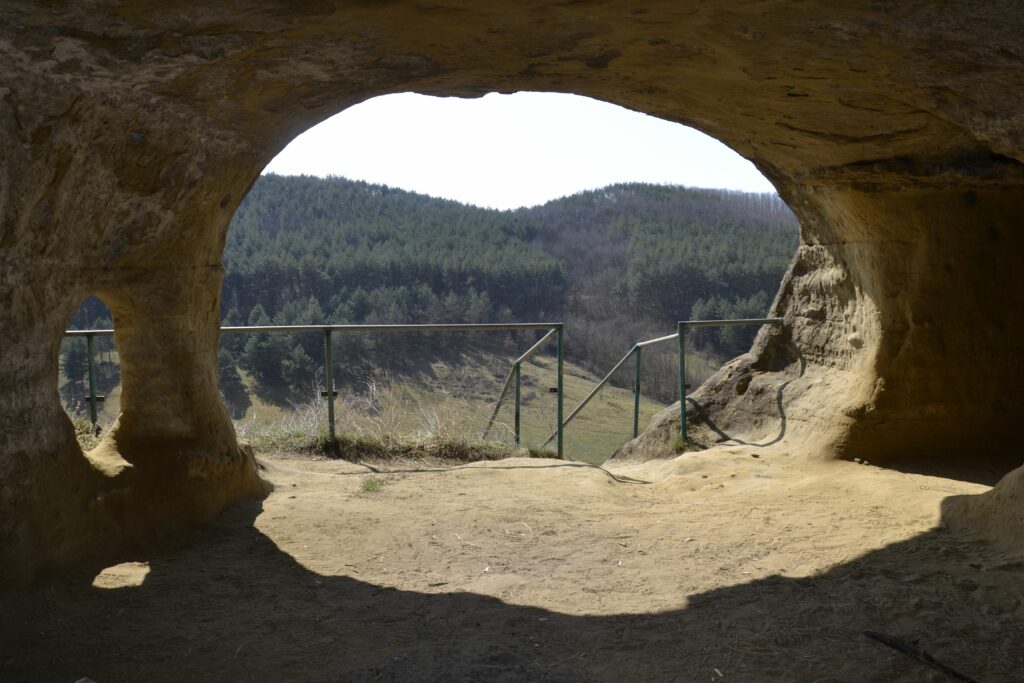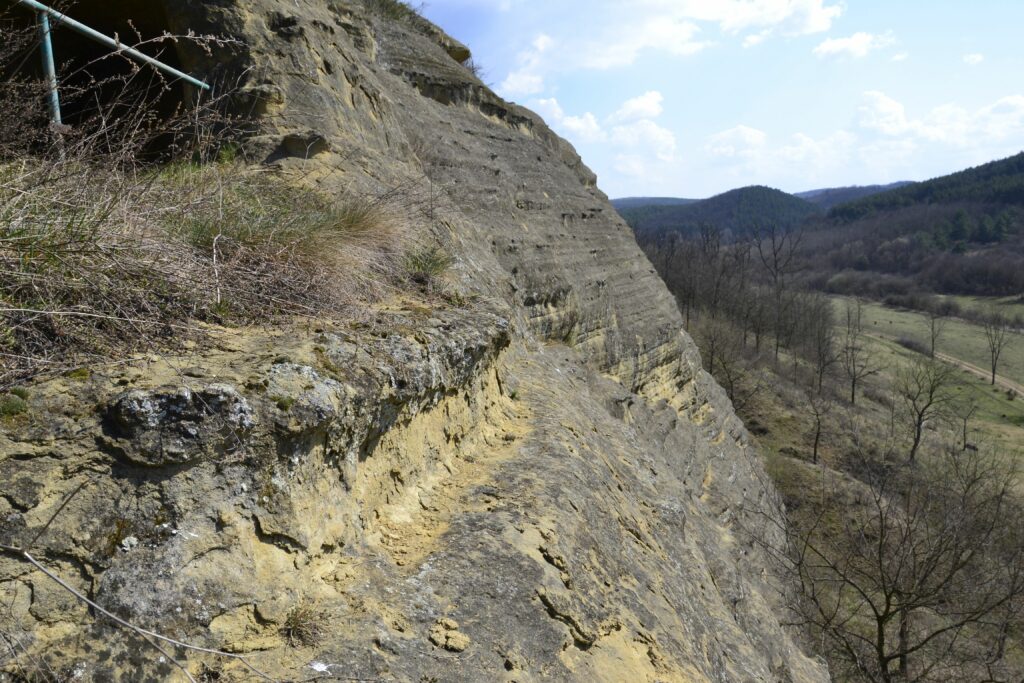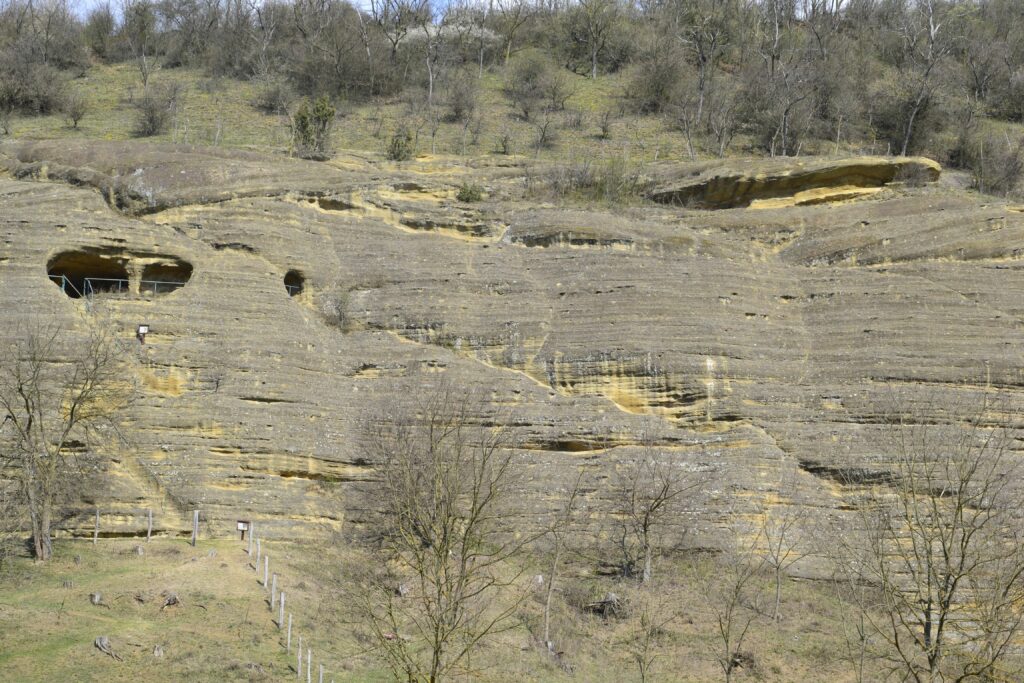From the north of the Mátra Hills, roughly among Salgótarján, Fülek and Ózd, there is a sedimentary rock known as cross-layered sandstone, glauconite sandstone and Pétervására Sandstone. Its material consists of medium and fine-grained sand, with a thickness of 150 -600 m.

It is poor in fossils, visible to the naked eye . Some of its coarser-grained layers contain larger mollusk shells, indicating a shallow-sea environment (20-30 m deep) with normal salinity. The finer-grained, silty layers contain microscopic fossils. The analysis of these resulted in the formation of rock in the early Miocene, between 25 and 20 million years.

The lack of traces of silt-dwelling organisms and stratification indicate that the currents were strong and the sand was in almost constant motion. On land, in the sand deserts, the wind builds sand dunes and ripple marks. The flowing water in the sea built and moved the sand waves, which reached a height of up to 12 metres near the shore. Moving away from the shore, at the bottom of the deeper sea, the height of the sand waves decreased and then tamed into sand ripples.

Currently, similar sedimentation occurs in places (e.g. in the North Sea) where tidal areas and tidal currents are strong. The early Miocene ancestral geographic environment was therefore significantly different from today’s situation. The mountain ranges of the Carpathians have not yet risen, but even the rise of the Alps was only at the beginning. The sea that takes the place of today’s Carpathian Basin continued through the Bavarian Basin all the way to the valley of the River Rhône in France. The alternation of low tide and hight tide was not hindered by narrow straits. Just think about it: today, on the shores of the Mediterranean Sea and the Black Sea, which are connected to the world’s seas through narrow straits, the effects of low tide are barely noticeable.

The researchers of Pétervására Sandstone, were Senior Jenő Noszky and Ferenc Szentes at the beginning of the 20th century. In the eighties and nineties, the studies of Tamás Báldi and Orsolya Sztanó resulted in the interpretation of the former sedimentation environment.
One of the typical occurrences of the Pétervására Sandstone can be seen near Sóshartyán. The high profile of about 20 is particularly spectacular. It is not known when and by whom, but one of the rock shelters was expanded into a hermit’s apartment , which can now be known to anyone by climbing stairs and guardrails. It is unfortunate that some take advantage of this for destruction and littering.
